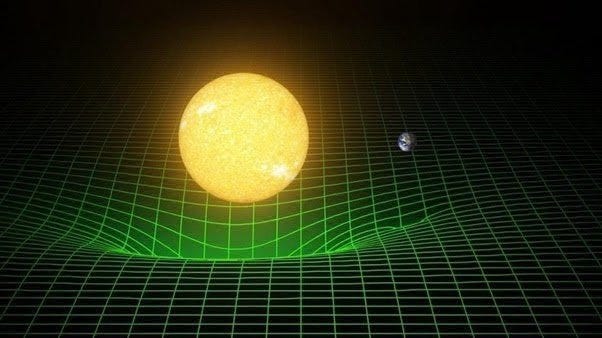Dark matter is the fabric of spacetime
Newton figured out gravity and dark matter in 1718. In the following, replace 'aethereal medium' with 'dark matter'.
Isaac Newton suggests the existence of an aether in the Third Book of Opticks (1st ed. 1704; 2nd ed. 1718): "Doth not this aethereal medium in passing out of water, glass, crystal, and other compact and dense bodies in empty spaces, grow denser and denser by degrees, and by that means refract the rays of light not in a point, but by bending them gradually in curve lines? ...Is not this medium much rarer within the dense bodies of the Sun, stars, planets and comets, than in the empty celestial space between them? And in passing from them to great distances, doth it not grow denser and denser perpetually, and thereby cause the gravity of those great bodies towards one another, and of their parts towards the bodies; every body endeavouring to go from the denser parts of the medium towards the rarer?"
Newton is referring to the state of displacement of the dark matter.
Dark matter is the fabric of spacetime. Dark matter is displaced by ordinary matter. Displaced dark matter is the physical manifestation of curved spacetime.
The following image represents both curved spacetime and the state of displacement of the dark matter.
(T. Pyle/Caltech/MIT/LIGO Lab)
Displaced dark matter 'displaces back', causing gravity.
The relativistic mass of an object is the mass of the object and the mass of the dark matter connected to and neighboring the object which is displaced by the object. The faster an object moves with respect to the state of the dark matter in which it exists the greater the displacement of the dark matter by the object the greater the relativistic mass of the object the greater the displaced dark matter 'displaces back’ and exerts pressure toward the object. The relativistic mass of an object accounts for the gravitational pressure associated with the object.
The reason why some galaxies are theorized to be missing dark matter is due to their being ultra-diffuse and for their state to be almost completely accounted for by the ordinary matter they contain. The minimal displacement of the dark matter caused by their ultra-diffuse nature allows for their relativistic mass to account for their state.
Time is the rate at which an atomic clock ticks. The rate at which an atomic clock ticks is determined by the state of the dark matter in which it exists. The greater the displacement of the dark matter by a massive object, the greater the displaced dark matter ‘displaces back’ and exerts pressure toward and throughout the object, the greater the pressure exerted toward and throughout an atomic clock on the surface of the object, the slower the atomic clock ticks.
The faster an atomic clock moves with respect to the state of the dark matter in which it exists the greater the displacement of the dark matter by the clock the greater the pressure exerted toward and throughout the clock as the displaced dark matter 'displaces back’ the slower the clock ticks.
The rate at which an atomic clock ticks is determined by the state of the supersolid dark matter in which it exists. This is why the speed of light is always determined to be ‘c’.
The ‘empty’ space in protons and neutrons unoccupied by the quarks consists of dark matter. The dark matter displaced by the quarks, pushing back and exerting pressure toward the quarks, causes the protons and neutrons to maintain their structure.
Particles of ordinary matter move through and displace the supersolid dark matter causing it to wave, analogous to the bow wave of a boat.
Wave-particle duality is a moving particle and its associated wave in the supersolid dark matter. Light consists of a moving photon and its associated wave in the dark matter.
Gravitational waves are waves in the smoothly distributed dark matter.
Dark matter ripples when galaxy clusters collide and waves in a double-slit experiment, allowing general relativity to be compatible with quantum mechanics.




